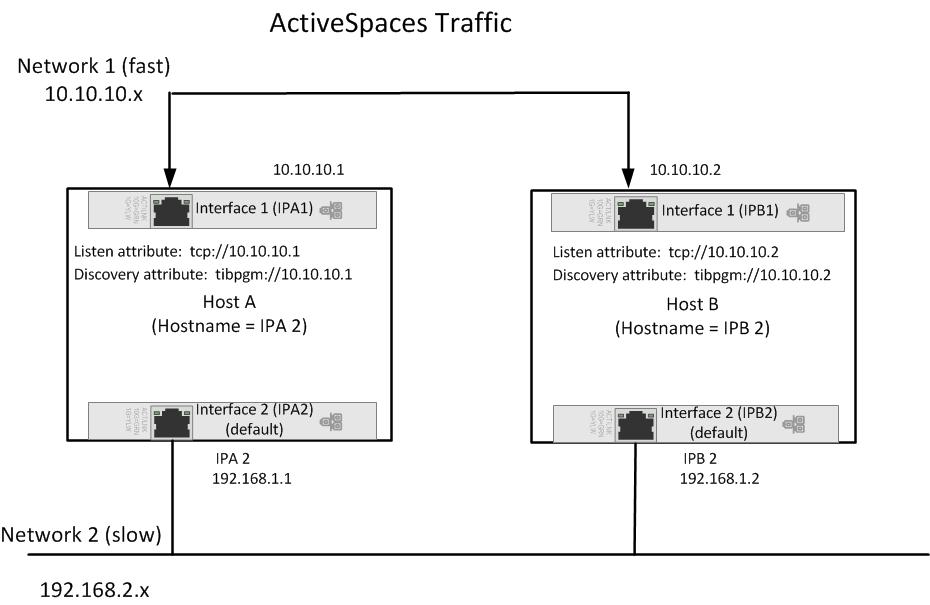Best Practices for Node Discovery
Specifying discovery when using ActiveSpaces security, choosing the right discovery point, and specifying multiple TCP discovery nodes for fault tolerance are some approaches you can use for node discovery.
Specify Discovery When Using ActiveSpaces Security
If you are implementing ActiveSpaces security:
- The discovery transport type must be TCP.
- The discovery list on both the requestor and controller members for the given metaspace binding must be the same.
Also, when you implement ActiveSpaces security, you do not need to specify the discovery URL for a member that is joining the metaspace, because the discovery URL is retrieved from the security policy file or security token file used to start a node. If you do specify the discovery URL, it is ignored and ActiveSpaces uses the value for the metaspace as specified in the security configuration files.
For more information on ActiveSpaces security, see TIBCO ActiveSpaces Developer’s Guide.
Choose the Right Discovery Point
When you specify the discovery attribute (either in the discovery attribute of the MemberDef object for the space member or in the discovery parameter for the as-admin connect command), you can specify the IP address of the network interface to use for discovery.
It is important to specify the optimum discovery IP address. For example, in a network where you have several subnetworks, or where you have a relatively fast network and also a slower network, performance will be best if you choose the faster network. Figure 7 shows a network topology that has a fast network and a slower network.
In the network shown in Figure 7, there are two networks: network 1 is fast and network 2 is slow.
To ensure that you use the interface connected to the faster network for discovery, specify the interface for the faster network. In the example, we specify the tibpgm discovery protocol and the IP address of the interface for the faster network:
tibpgm://10.10.10.1
This ensures that discovery uses the faster network.
Specification of Multiple TCP Discovery Nodes for Fault Tolerance
If you are using the TCP discovery method, you can specify multiple TCP discovery nodes to provide fault tolerance.
Figure 8, Specifying Multiple TCP Discovery Nodes illustrates how to specify multiple TCP discovery nodes in a network with four TCP hosts.
In the example, we specify the tcp discovery method and two node address/port pairs:
tcp://10.10.10.1:6000;10.10.10.2:6000
When setting up the discovery attribute in the MemberDef object for the space or with the discovery parameter for the connect command, you can specify additional IP addresses and ports, separated by semicolons.


